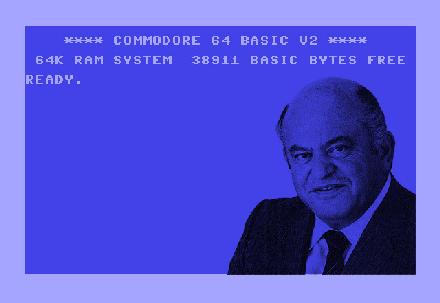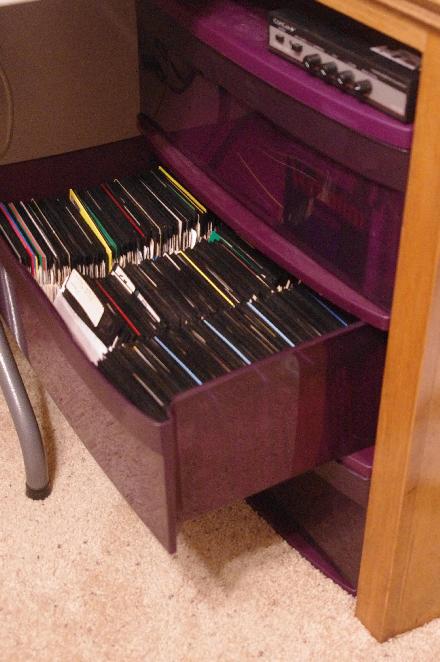Jack Tramiel once said “business is war,” and based on his track record, he must have meant it. He was said, “anybody who sells a product against me I would like to wipe out.” Jack Tramiel was ruthless in business. One of his first tasks at Atari was cutting his new staff of 1,200 employees down to 100 [1]. Chuck Peddle, Tramiel’s right hand man at Commodore, once said of the man, “he destroyed me, he destroyed my family, he did all kinds of terrible things” [2].
If Tramiel’s actions were considered ruthless, he had good reason; up until the age of 10 he lived in a Jewish ghetto in Poland; after that, he and his family were sent to the Auschwitz concentration camp. According to Tramiel, his father died at the camp after being injected with gasoline. At the age of 17, Tramiel and his mother were liberated by the United States Army. If the guy was a jerk later in life, I’m willing to cut him some slack.
If you want to read the Cliff’s Notes version of his life you can do so here, but here are the highlights as they pertain to me: after moving to the United States (with $10 in his pocket) and serving his time in the US Army, Tramiel opened up a typewriter-repair business in the Bronx. According to Tramiel:
“I was sitting in a taxi cab and I was trying to get the name for the company which I was building, and I was really looking to make it call it General, I’d just come out of the army and I was in the army for three years and seven months, so I was looking for something strong, so I was looking for a name like General which I couldn’t get because it was taken. Then I was looking for a name like Admiral, and that was taken, and as I was talking to a friend of mine in the cab right in front of me this car with the name Commodore. I said well let’s try this one.” – Jack Tramiel
Tramiel’s Commodore dabbled in typewriters, adding machines, and digital calculators before one of his employees (Chuck Peddle) told Tramiel that calculators were a “dead end” and computers were the future. Using a combination of off the shelf parts and chips designed in house, Peddle created the Commodore PET, an all-in-one computer. To keep up with the rapidly changing home computer market, Commodore released first the VIC-20, followed by the Commodore 64.
Tramiel’s infamous quote “We need to build computers for the masses, not the classes,” may not sound groundbreaking today, but in the early 1980s, it was. At a time when home computers cost thousands of dollars, the Commodore 64 launched in 1982 with a $599 price tag. Even more incredibly, it’s estimated that each one only contained $135 in parts. Commodore’s aggressive price drops and market saturation directly drove Texas Instruments out of the home computer market, and certainly got Apple and IBM’s attention.
One thing I always thought was genius about the Commodore 64 was that all of its peripherals attached to the outside of the computer, as opposed to internal upgrades like the Apple and IBM required. Adding an internal modem to a PC or an Apple required disassembling the case and adding a card into a slot; adding one to the C64 was as simple as plugging a cartridge into a slot on the rear of the machine. The design took some of the mystique out of computers. By being able to add a new peripheral to your machine in seconds without needing a screwdriver, Tramiel succeeded in delivering a computer that the masses could use.
Tramiel’s reign at Commodore didn’t last long — he retired from the company in 1984, and used his money to purchase the home division of Atari. By that time Atari, along with everyone else, had just suffered through the video game crash of 1983. Tramiel’s first win for Atari was the Atari ST computer. During Tramiel’s time at Atari the company released several other computers (including the XE line), and although Tramiel wanted to get out of the console business, it was under his watch that the Atari 2600 Junior, the 7800, the Lynx, and the Jaguar were all released. In 1996 Tramiel retired from Atari.
In 2007, Jack Tramiel met Apple co-founder Steve Wozniak for the first time at a celebration party for the 25th anniversary of the Commodore 64, held at the Computer History Museum in Mountain View, California. When I read about their meeting at the time I thought how crazy it was that these two had never met before.

I also thought the meeting was interesting because Tramiel was once referred to as the “anti-Jobs.” Tramiel believed in function before form. The beige, breadbox design of the Commodore 64 stands in stark comparison to the sleek lines of Apple’s products. Still, asthetics aside, I’m sure Woz and Tramiel found things to talk about — perhaps they swapped stories about how Tramiel abused his engineers, and how Woz was abused by Jobs.
Both Wikipedia and the Guinness Book of World Records still list the Commodore 64 as the best selling computer of all time, thanks largely to its lengthy production run, Tramiel’s bottom-of-the-barrel pricing, and his insistence that his computers be available on department store shelves.
If you want to read more about Jack Tramiel and the early days of Commodore, I highly recommend On the Edge: The Spectacular Rise and Fall of Commodore (2005, Variant Press). And if you want to read what it was like to grow up using a Commodore, there’s always this book … :)


























